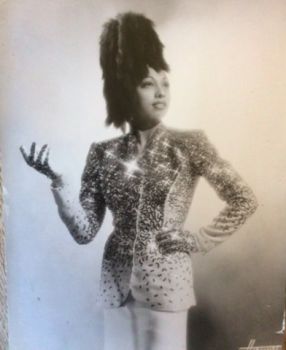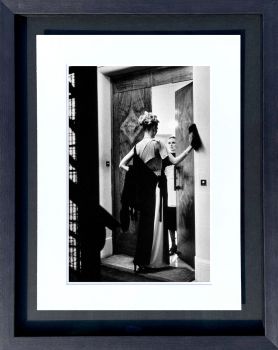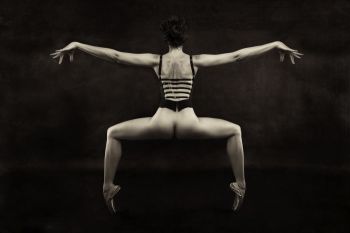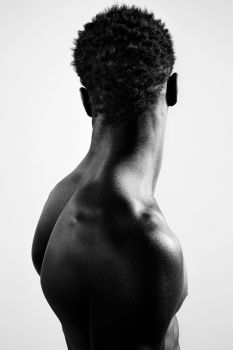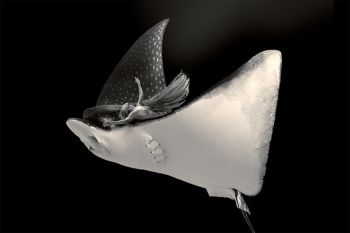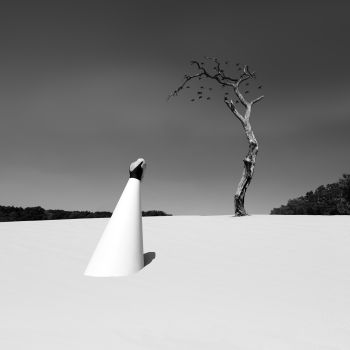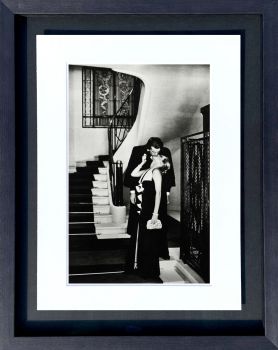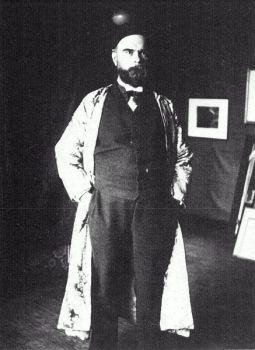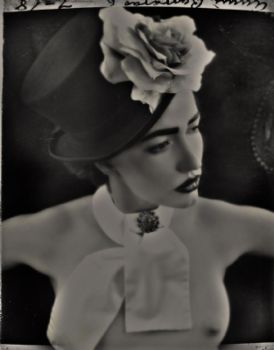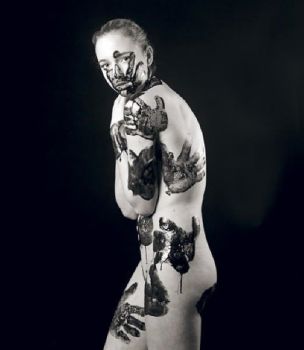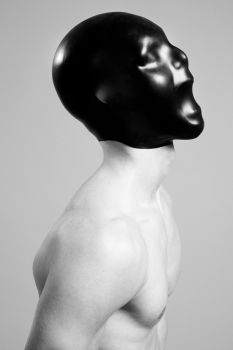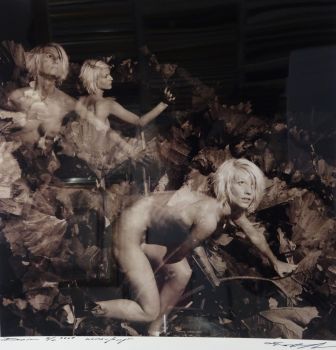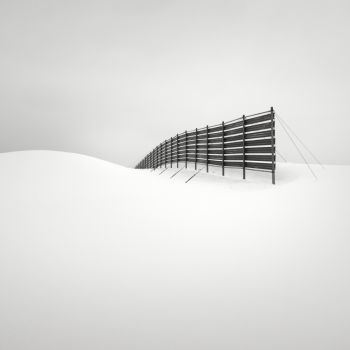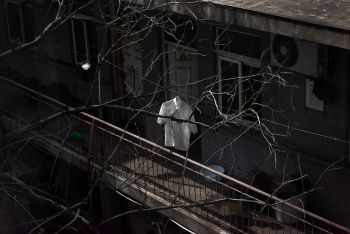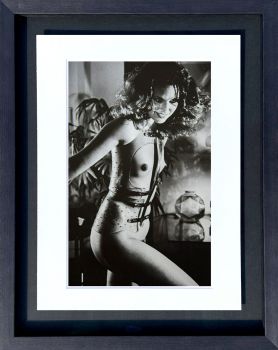The Candid Photography of Henri Cartier-Bresson
In the 1970's the French photographer Henri Cartier-Bresson had already become a living legend. His photographs were known all over the world and in France his name was synonymous to photography itself. Cartier-Bresson was considered a master of candid photography and a pioneer of street photography.
His pictures are notable for their excellent compositions. In this article we will discuss some of his characteristic works, ranging in time from the thirties to the seventies.

Fig. 1. Eugène Atget, Boulevard de Strasbourg, 1912.
Influenced by surrealisme
Cartier-Bresson’s very first pictures were influenced by the Surrealist movement in Paris, which he joined around 1926. In fact, many of his pictures reflect the Surrealists’ fascination for Eugène Atget’s enigmatic and old-fashioned images (fig. 1). They seemed to have been inspired by Atget’s favourite motifs, such as dummies in shop windows or old shop signs.
This is, for example, demonstrated in Cartier-Bresson’s picture of a closed shop window in Budapest (1931, fig. 2), displaying a bust of a male doll and an outmoded commercial plate.

Fig. 2 Henri Cartier-Bresson, Shop window, Budapest, Hungary, 1931
The surrealist concept of “objective chance” also appears to have been a source of inspiration for Cartier-Bresson. It refers to the fortuitous encounter between two independent elements, producing an electric spark, analogous to some kind of poetic revelation.
In search of chance encounters
Assuming the role of the modern flâneur, Cartier-Bresson was constantly in search of these chance encounters, as represented in his wonderful picture of Madrid (1933, fig. 3). The male figure on the foreground has been captured on camera just as he is about to walk into the centre. In this moment of objective chance, his black suit marvelously contrasts with the white circles and the black and white stripes in the background.
This notion of chance is comparable to Cartier-Bressons notion of the so called “decisive moment”, referring to a point in time, in which the perfect set of visual elements could be captured on camera. His interest in geometrical patterns and the idea of the decisive moment are important features throughout Cartier-Bresson’s oeuvre.

Fig. 3 Henri Cartier-Bresson, Madrid, Spain, 1933
Travelling across the globe
In 1947 Cartier-Bresson established Magnum, the agency that later became emblematic of photojournalistic excellence. From 1947 until the early 1970s, he travelled across the globe, producing hundreds of photo reports about different cultures.
His beautiful photograph of the Italian town Scanno (1951, fig. 4) depicts several women in traditional Scanno costumes, carrying trays with food on their heads while three little girls are standing in front of the entrance of a church.
Again his attention to detail and geometry is evident. The black lines from the bannisters in the foreground visually seem to continue into he lines constituting the fences in the background, giving the overall picture a sense of uniformity and spacial depth. These geometrical patterns are more or less repeated in the row of the women, intensifying the esthetic quality of the picture.

Fig. 5 Henri Cartier-Bresson, Scanno, Italy, 1951
The power of photography
Whilst exploring different countries, Cartier-Bresson became interested in capturing the visual representation of power. His intriguing image of the Winter Palace in Leningrad (1973, fig. 6) pictures a man’s gait mirroring the giant, three-storey effigy of Lenin behind him. The raincoat of the communist leader which is reflected in the almost identical dress of the small man forms a striking similarity.
In fact, Cartier-Bresson has created a kind of photomontage, due to the differences in scale and the juxtaposition of the living and the inanimate. To do so, he required neither scissors nor glue but in stead used the elements already present in the physical space.
For Cartier-Bresson photographing was also a way to convey that images could be used as a powerful medium for propagating political messages.

Fig. 6 Henri Cartier-Bresson, Giant effigy of Lenin, Winter Palace, Leningrad, Russia, 1973
Portraits of celebrated artists
Besides photojournalling, Cartier-Bresson took various portrait shots of celebrated artists between 1944 and 1961, including Pablo Picasso, Pierre Bonnard, George Braque and Henri Matisse.
In his portrait of the elderly Matisse (1944, fig. 7) the artist is shown at his home in the French Riviera. He holds a white dove in his hand while sketches the bird. Three other doves are perching on a cage in the foreground. The picture is exemplary of Breton’s portraits, which are always photographed from a slight distance; emphasizing the relationship between the sitter and his surroundings.
In doing so, Cartier-Bresson tried to make his models forget the fact that they were being photographed.

Fig. 7 Henri Cartier-Bresson, Henri Matisse, 1944.
Photography available for sale
We hope this article has inspired you, would you like to see more photography at our website Gallerease? Please have look here!


